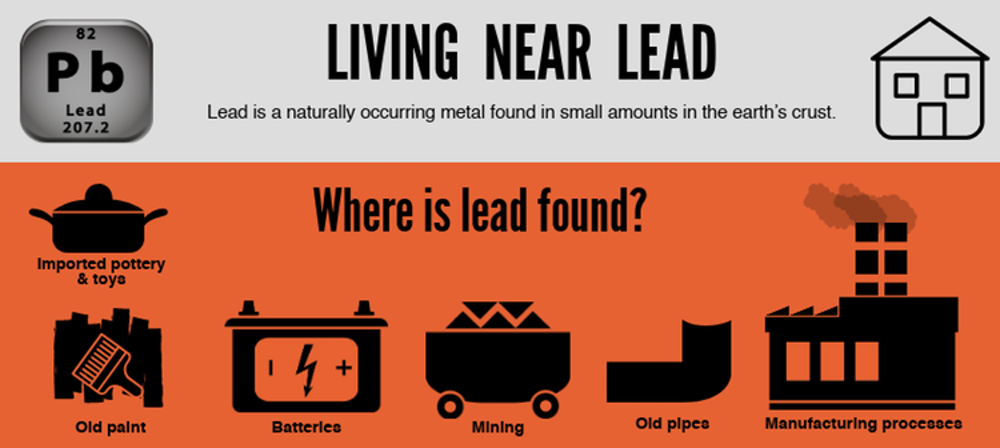Lead persists extensively across environmental compartments from natural and anthropogenic sources, necessitating awareness of lead sources and pathways to guide prevention and remediation efforts.
Once released into the environment, lead lingers indefinitely in soils, sediments, water, and even living tissues.
Understanding where lead accumulates provides vital insights for public and environmental health strategies aimed at limiting future exposures.
Where is Lead Found in the Environment?

Lead is ubiquitously found across environmental compartments including soils, bodies of water, sediments, air, and living tissues due to both natural lead deposits and anthropogenic contamination from sources like leaded gasoline, paint, and industrial activities.
Lead persists indefinitely once introduced.
Key Points
- Natural lead deposits exist worldwide and can enter ecosystems through weathering.
- Anthropogenic sources have spread lead extensively into soils, dust, waterways, plants, animals, and humans.
- Lead accumulates in the body long-term when absorbed, stored in blood, bones, teeth, and organs.
Do Natural Lead Deposits Exist Worldwide?

Yes, natural lead deposits are found across all continents from geologic processes.
Lead can be released through weathering and volcanic emissions.
However, mining activities accelerate natural lead mobilization.
How Does Lead Get into Soil?
Lead particles accumulate in surface soils near historical leaded gasoline emissions, deteriorating lead-based paints, and industrial point sources.
Soils can contain extensive lead from shooting range contamination as well.
Can Lead Pollute Aquatic Ecosystems?
Yes, lead infiltrates lakes, rivers, wetlands, and oceans mainly through direct discharges, surface runoff, and atmospheric deposition.
Lead shots and sinkers also introduce lead into waterways.
How Might Lead Enter Household Dust?
Indoor dust can contain lead from deteriorating leaded paint, contaminated soils tracked inside, or past use of leaded gasoline.
Lead dust is a major exposure pathway for children.
Do Plants Absorb Lead from Soils?
Unfortunately yes.
Leafy vegetables and other crops can uptake lead from contaminated agricultural soils, presenting a food chain risk.
Soil remediation before planting is important.
Can Lead Bioaccumulate in Animals?
Yes, lead bioaccumulates in animals and magnifies food chains with predation.
Lead residues are found in fish, meat, eggs, and dairy, contributing to dietary exposures.
Does Lead Persist in Human Tissues?
Absolutely.
Lead absorbed by the body is stored long-term in blood, bones, teeth, and organs.
Even low-level chronic exposures accumulate over time potentially causing irreversible health effects.
How Does Lead Get into the Environment?
Lead enters the environment from both natural and anthropogenic sources.
Natural lead deposits exist worldwide and erosion can release lead into ecosystems.
However, human activity has introduced far higher levels of lead through mining, smelting, manufacturing, fossil fuel burning, and the use of lead products like paint and gasoline.
Lead continues leaching from contaminated soils, old lead paint, and residues from historical emissions.
Deteriorating lead pipes, solder, and plumbing components also introduce lead into drinking water.
Industrial wastewater discharges and waste sites further spread lead if not properly controlled.
Once in the environment, lead persists indefinitely in soils, dust, water, and living tissues.
What Are Some Products That Contain Lead?
Many products contain or contain lead, introducing it into the environment.
Leaded gasoline exposed entire populations to lead emissions prior to its phaseout. Lead-based paints on homes, schools, and toys poisoned children.
Lead solder in food cans contaminated food. Lead pipes still supply drinking water in some cities.
Lead-acid car batteries, lead shot and sinkers, lead-glazed pottery, and leaded aviation fuel remain common lead sources.
While many uses have been eliminated, lead persists.
How Do Humans Get Exposed to Lead?
Humans are exposed to lead from contaminated air, dust, soil, food, and water.
Ingesting lead paint chips or breathing lead dust are major exposure routes for children.
Drinking water from aging lead service lines also poses ingestion risks.
Workers face exposure in manufacturing and recycling.
Crops irrigated with lead-contaminated water or grown in contaminated soils uptake lead-introducing dietary exposures.
Lead from past gasoline emissions remains in surface soils and household dust.
Eliminating remaining lead uses and remediating residuals is key for public health.
Key Takeaway:
- The pervasiveness of lead across Earth systems demonstrates why diligent avoidance of any unnecessary uses is vital along with remediation where possible to protect public and ecological health.
FAQ
How Does Lead Get into Drinking Water?
Lead primarily leaches into drinking water from aging lead service lines and plumbing containing lead solder, fittings, or components. Treatment adjustments can reduce the corrosion of lead.
Can Lead Contaminate Crops?
Yes, leafy greens, root vegetables, fruits, and other crops can uptake lead from contaminated agricultural soils, introducing it into the food chain.
Is All Environmental Lead Anthropogenic?
No, natural lead deposits exist across the world from geologic processes, however, mining and pollution have introduced much higher quantities into ecosystems.
At GreenChiCafe, we are passionate about sustainability and protecting the natural world around us.
Please visit our website to learn more about important environmental issues.
